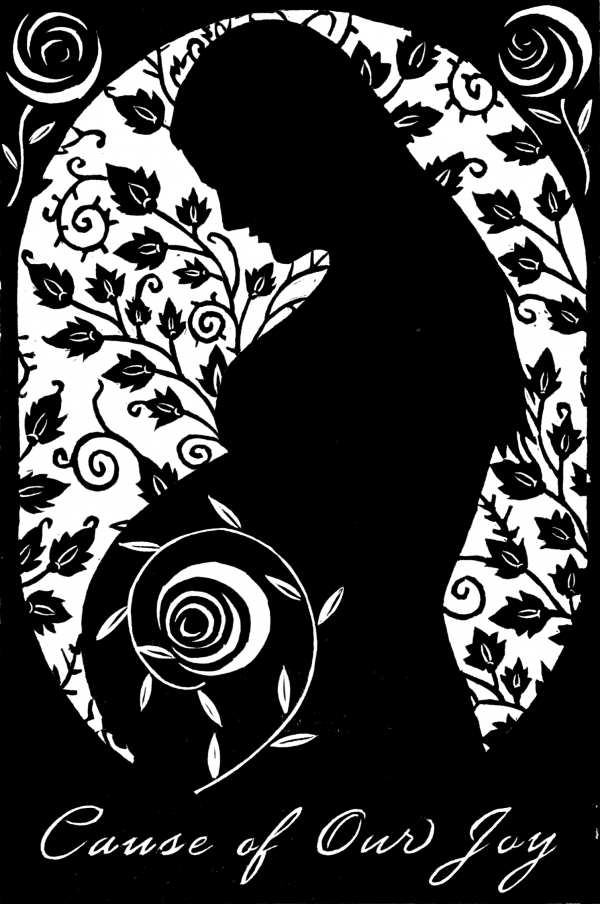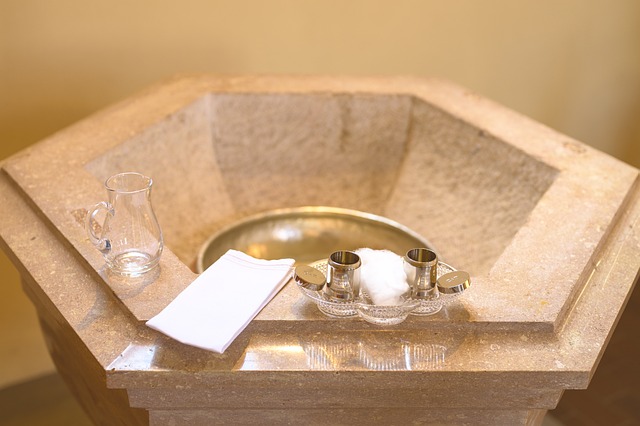MARY, MARY: Curatorial Statement

I am the Lord’s servant,” Mary answered. May your word to me be fulfilled. ~ Luke 1:38
Behold, your mother. ~ John 19:27
An inspiration to countless artists over many centuries, Mary has been painted or depicted in other media in many different versions and roles — as woman, daughter, cousin, mother, wife, refugee, comforter, intercessory to Jesus, the Madonna, the Virgin, Goddess, a mortal, an immortal, an exemplar of purity, the Divine Feminine. Such renowned artists as Artemisia Gentileschi, Fra Filippo Lippi, Michelangelo, Sandro Botticelli, Caravaggio, Rafael, Paul Gauguin, Rufino Tamayo, and Gerhard Richter have all envisioned and visualized Mary. She has been depicted in a 4th Century Roman catacomb, in drawings, in folk imagery, as tattoos, in murals, on prayer and greeting cards, as statuary.
Mentioned more than 50 times in the New Testament, Mary is referred to some 70 times in the Qur’an where, as Maryam, she is revered as the Virgin Mother of Jesus, Allah’s chosen one, above all other women (Qur’an 3:42). That she is the only woman mentioned by name in the holy book of Islam bestows upon her a unique mark of honor. For other religious, such as members of Jehovah Witnesses, Mary occupies no special place in worship. Mormons, who belong to the Church of Jesus Christ of Latter-Day Saints, also do not worship Mary, though they do recognize her in the Book of Mormon as “a precious and chosen vessel” (Alma 7:10).
What might Mary as a contemporary of ours in the 21st Century look like? It is that question that the artworks in this exhibition are intended to answer. The objective?
To prompt a different way of thinking about, perceiving, and seeing Mary, seeing her not so iconographic or abstract, and reflecting on what she might mean to us in our society today so that we might connect to her in a more intimate way. Viewers are encouraged to meditate on her similarities to us humans, and not as so different and apart.
For this exhibition, I invited artists to consider Mary in contemporary contexts — conceptually, imaginatively, evocatively, even emotionally. As you will see when you view the artworks and read the artists’ statements about their work(s), the depictions are inclusive racially, celebrating the beauty and dignity of not only the traditionally white or Caucasian Mary, the earthly mother, but also of the beautiful Black Madonna, imbued with strength, love, and compassion, even in the face of immense suffering. Margaret Adams Parker’s “Madonna, Angola” and “Pieta (Station XIII)” and Janet McKenzie’s “Holy Mother of Comfort and Solace” and “Pieta – the Suffering” are four unforgettable examples.
Some of the artists ask us to contemplate Mary as refugee, as does Hansa (Hans Versteeg) in his painting “Madonna de Mare Nostrum (or, “Cloak of Love”)”; to consider her, as Dana Ellyn does, experiencing Covid, and thus anchoring us in our current pandemic, suffering as we suffer; or exploring, as Lauren Tilden does in “Dust Bowl”, a Mary of courage founded on faith in God, enduring even in the worst of circumstances.
Even those artworks that appear more iconographic or traditional in appearance offer us something to discover, designed as they are with nontraditional materials; see, for example, Susan M. Webb’s “I am beloved”, which is crafted from palm leaves, symbols of peace and eternal life. Ann Tracy’s artwork makes use of digital technologies.
The poems of our contemporaries also treat Mary differently than we might be accustomed, surprising us by fixing her presence in our well-established culture: read, for example, JC Reilly’s “Stopping at a Starbucks in Egypt” and Collin Kelley’s “The Virgin Mary Appears in a Highway Underpass”. Others, such as Kristin Berkey-Abbott’s “A Girl More Worthy”, retell in everyday language the story of the angel Gabriel’s visit to Mary, situating him in, of all places, Miami, where “[h]e goes to the beaches, the design / districts, the glittering buildings” and even a “developer’s / office”. Whether literary or visual, every piece in the show calls us to consider something new, different, deeper about Mary.
This exhibition includes the artwork of local artists Kathy Daywalt, Manal Deeb, Dana Ellyn, Lisa Harkins, Margaret Adams Parker, Elise Ritter, and Kathleen Stark, and images of works by many more artists outside the DMV region, including emerging artist Aisha Renee and such established artists as Carolyn M. Abrams, Trine Bumiller, James Janknegt, Janet McKenzie, Randall David Tipton, Jeanie Tomanek, “digital alchemist” Ann Tracy, the “contemplative photographer” Diane Walker, and Kreg Yingst. Some of the artists have more than one artwork in the show. Although a small selection of local artists’ work can be seen in person in the Parish Hall gallery space, an image of every work in the exhibition can be seen online in the Arts & Faith section of St. Michael’s Website (https://www.stmichaelsarlington.org).
Also featured online, as well as in the Exhibition Notebook in the Parish Hall, are all the poems, Artist Statements, Biographies, Questions for Reflection, Purchase List of Artworks, and Resources, among which I have listed paintings, publications (books and articles), and videos well worth browsing and contemplating. Four poets made recordings of their work; these readings appear online.
Maureen E. Doallas
Arts & Faith Ministry
